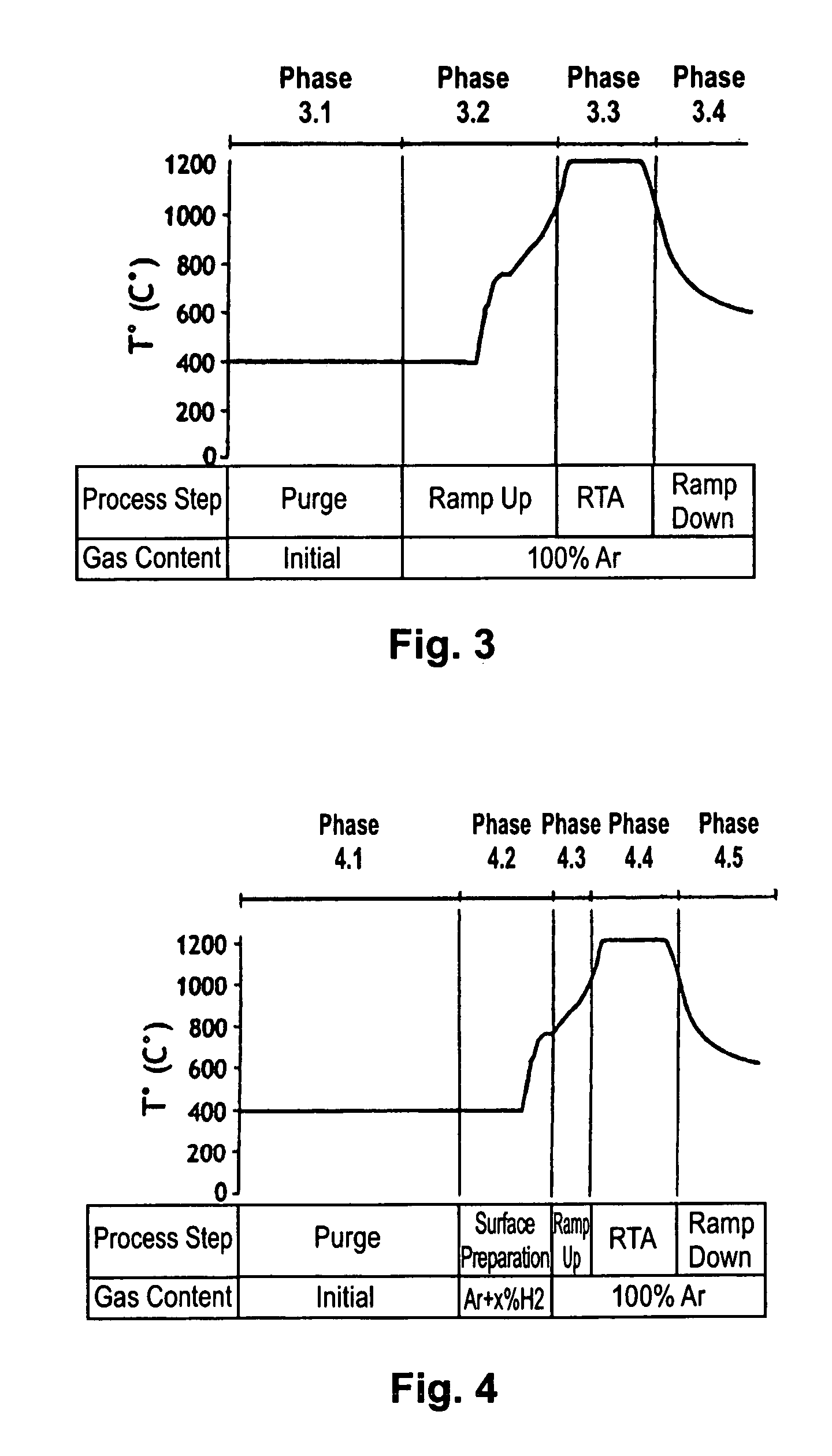Method of reducing the surface roughness of a semiconductor wafer
a technology of surface roughness and semiconductor, applied in the direction of semiconductor devices, solid-state devices, decorative arts, etc., can solve the problems of reducing affecting the appearance of the wafer, so as to reduce the surface roughness of the wafer
- Summary
- Abstract
- Description
- Claims
- Application Information
AI Technical Summary
Benefits of technology
Problems solved by technology
Method used
Image
Examples
Embodiment Construction
[0033]FIG. 1 is a non-limiting example of an annealing chamber 1 that enables the invention to be implemented. The chamber is used to implement an annealing stage under a pure argon atmosphere using the RTA technique.
[0034]In this implementation, the chamber 1 preferably includes an enclosure 2, a reactor 4, a substrate-carrier tray 6, two arrays of halogen lamps 8, 10, and two opposed pairs of side lamps (not shown). The enclosure 2 also includes a bottom wall 12, a top wall 14, and two side walls 16,18 situated at respective longitudinal ends of the enclosure 2. One of the side walls 16,18 includes a gate 20. The reactor 4 preferably includes a quartz tube extending longitudinally between the two side walls 16, 18. A gas inlet 21 and a gas outlet 22 are provided at the respective side walls 16 and 18. The gas outlet 22 is preferably situated in the side wall 18 that has the gate 20. The arrays 8,10 of halogen lamps are preferably situated above and below the reactor 4, respectivel...
PUM
| Property | Measurement | Unit |
|---|---|---|
| temperature | aaaaa | aaaaa |
| temperature | aaaaa | aaaaa |
| temperature | aaaaa | aaaaa |
Abstract
Description
Claims
Application Information
 Login to View More
Login to View More - R&D
- Intellectual Property
- Life Sciences
- Materials
- Tech Scout
- Unparalleled Data Quality
- Higher Quality Content
- 60% Fewer Hallucinations
Browse by: Latest US Patents, China's latest patents, Technical Efficacy Thesaurus, Application Domain, Technology Topic, Popular Technical Reports.
© 2025 PatSnap. All rights reserved.Legal|Privacy policy|Modern Slavery Act Transparency Statement|Sitemap|About US| Contact US: help@patsnap.com



